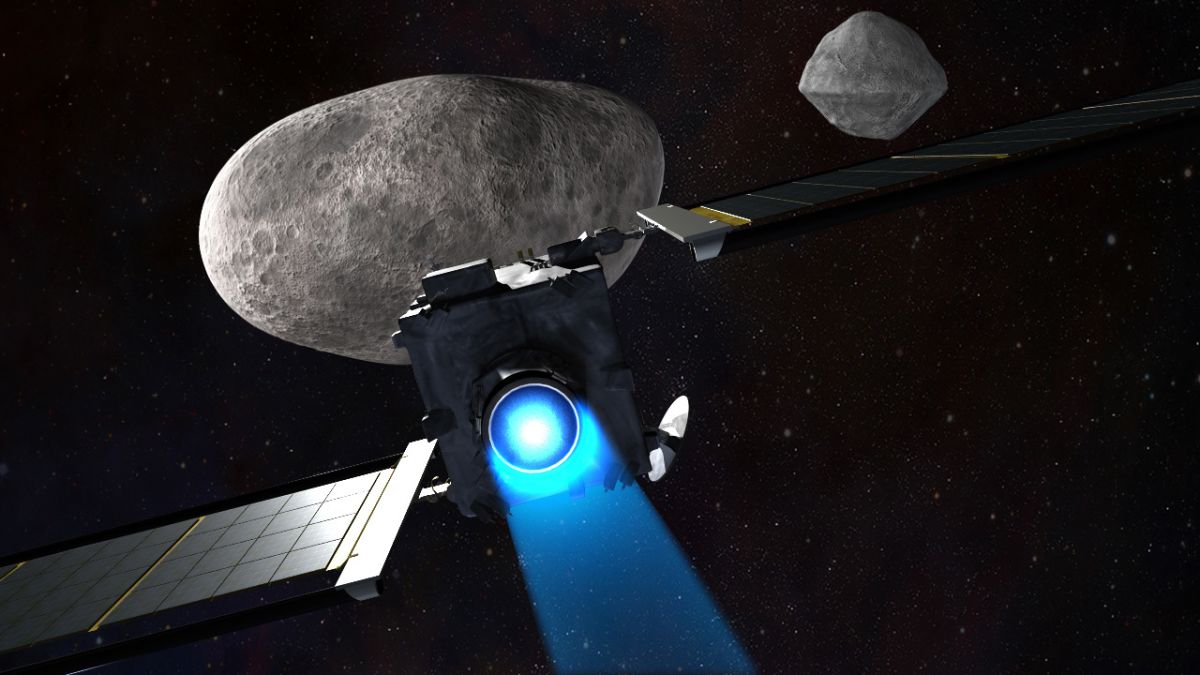Russia’s deadly RS-28 ‘Sarmat’ intercontinental ballistic missile (ICBM) can be used for planetary defense if the need arises, according to the director of the VP Makeev Design Bureau, Vladimir Degtyar.
This comes amid a series of asteroids that have recently made close passes from the Earth and the National Aeronautics Space Administration’s (NASA) Double Asteroid Redirection Test (DART) that was successfully tested in October year.
Degtyar clarifies that the missile’s original design and development are for military use. Its ‘anti-asteroid’ role is merely an unintended secondary capability besides the prohibitive – and possibly wasteful – costs involved for such a repurposing, given the unlikelihood of such an event.
The RS-28 Sarmat is a Russian silo-based heavy liquid-propellant orbital ICBM that can carry nuclear warheads. According to Russian media, Sarmat can deliver multiple independent re-entry vehicles (MIRV) weighing up to 10 tons anywhere in the world, making it the “most dangerous” missile on the planet.
As per information made public during the Army-2019 exhibition, the Sarmat ICBM’s range is 18,000 kilometers, and the launch weight is more than 200 tons, of which 178 tons is fuel.
The missile measures nine feet (three meters) in diameter and 116 feet (35.5) meters in length. According to Russian state media, the missile is unique owing to its unmatched speed and range, unsurpassed precision, and complete invulnerability while breaching anti-missile defense systems.

‘Asteroid Killer’ Missile For ‘Planet Killer’ Asteroid!
Russia’s Strategic Missile Forces commander Sergei Karakaev had said in a previous interview with Zvezda channel that the Sarmat’s power-to-weight ratio allows it to be fired at various trajectories. One of these is an outer space-directed trajectory where Sarmat’s utility for asteroid deflecting/planetary defense comes in.
In an interview with Rossiskaya Gazetta, Degtyar was asked about the Sarmat’s secondary asteroid deflecting capability, which was discussed in Russian defense and space scientists’ circles.
Degtyar mentioned previous asteroid and meteorite strikes in Russia, like the February 15, 2013 Chelyabinsk meteor, the Tunguska evet in June 30 in 1908, and the 1947 Sikhote-Alin meteor fall. These confirmed the “real threat” of asteroid strikes.
Russia is currently carrying out design studies for an ‘asteroid impact interceptor’ to target small-class space objects (between 10 to 100 meters across).
Russia’s present and upcoming ground-based space infrastructure can track larger objects, not smaller ones, making timely detection key. This is 5 to 7 hours before impact when the object is 1-2 million kilometers away from Earth.
Thus, the missile’s high energy, high thrust-to-weight ratio, and short preparation time for launch make it suitable for such a role.
Degtyar said that space science and rocketry already had established principles and techniques for the timely detection of dangerous space objects, and the only “obstacles” are the extremely high costs involved. “We propose multifunctional rocket and space systems, for which anti-asteroid protection is only one of the tasks, but not the most important one,” he said
“Our studies with colleagues working in academic institutions have shown that it is possible to create space-based detection tools for ‘surveillance’ of near-Earth space distances. One option is to place four spacecraft at libration (or Lagrange Points) at a distance of 1.5 million kilometers from the Earth.
The devices will maintain a constant position relative to the Earth at these points. However, creating such a system in relatively deep space requires huge financial investments and may never really come in handy,” Degtyar added.
Asteroid Threat Is Real, Yet Unlikely
An asteroid or comet with a diameter above 459 feet (140 meters) that approaches Earth at a distance of less than 5% of the distance from the Earth to the Sun is called a ‘potentially hazardous object’ (PHO).
But NASA says no PHOs are estimated to be on a collision course with Earth for the next 100 years.

Just two weeks ago, on November 19, telescopes and space agencies tracked a small asteroid (3.3 feet or one meter in dimension) within four hours of it being detected before it entered the Earth’s atmosphere. The asteroid, however, burnt up and disintegrated.
This was two months after NASA’s DART mission deflected the 524-feet (160 meters) Dimorphos asteroid as it was at a safe distance of 11 million kilometers from Earth on September 27.
Dimorphos was orbiting the larger Didymos (2559 feet or 780 meters), and the DART spacecraft was launched a year prior on November 23, 2021, on a SpaceX Falcon 9 rocket.
- The author can be reached at satamp@gmail.com
- Follow EurAsian Times on Google News




